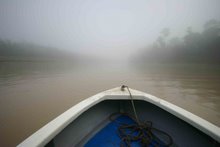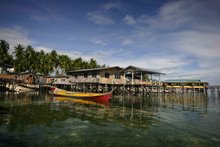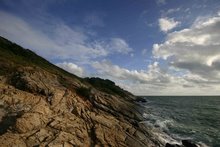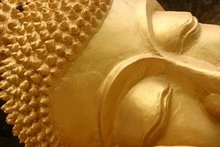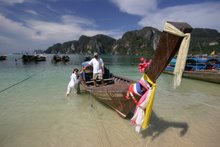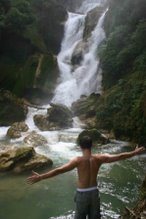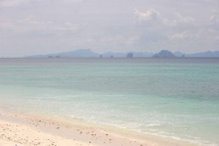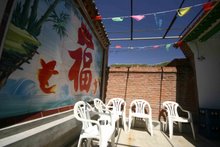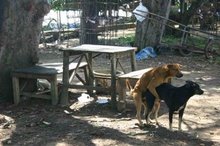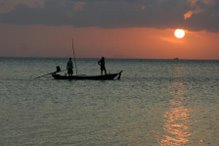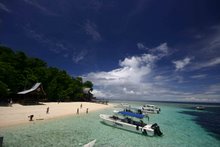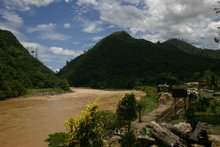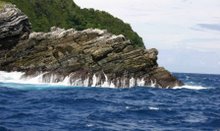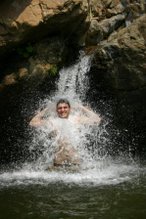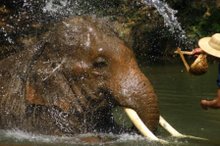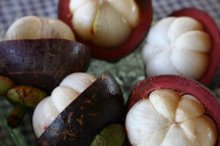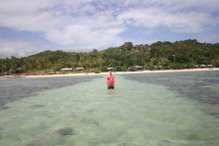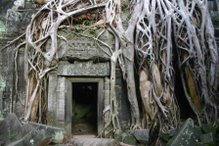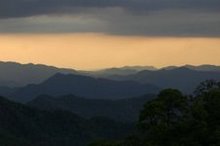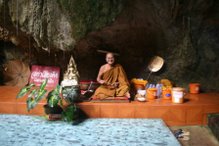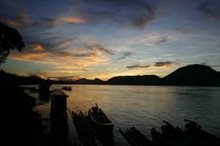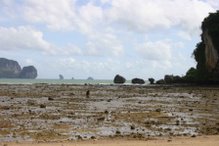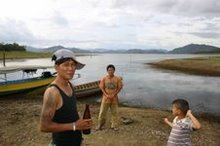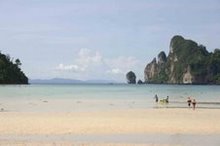The Hidden Treasures of Muck Diving
 Captured here by the camera of Lisa and Cian O'Fearghail are the tiny creatures that have created a new love of diving in me, totally different from the excitement of seeing sharks, turtles, or barracuda under the water. These are parts of the micro-life of muck diving, tiny inhabitants of corals, anemones, sea fans, sandy bottoms, and other remote habitats on the reef. They are more difficult to find than the large sharks that swim in depths and thus, despite their size, create a big excitement in divers that enjoy looking for them.
Captured here by the camera of Lisa and Cian O'Fearghail are the tiny creatures that have created a new love of diving in me, totally different from the excitement of seeing sharks, turtles, or barracuda under the water. These are parts of the micro-life of muck diving, tiny inhabitants of corals, anemones, sea fans, sandy bottoms, and other remote habitats on the reef. They are more difficult to find than the large sharks that swim in depths and thus, despite their size, create a big excitement in divers that enjoy looking for them. Savvy and local divers like to joke that diving on Sipadan is like watching TV. It's hardly a task to find the sharks and turtles and other large life that swim frequently in its waters. These sea slugs, called nudibranchs, aren't so obvious. These picture here are hardly more than an inch long and although they are brightly colored, they are easily over-looked swimming through a lively coral reef. It takes a keen, experienced (or just lucky) eye to find them. When I first was diving on sites such as Bohayan and Sibuan, DMs and other divers would point these out to me I would look around, all over the reef having no idea what I was even looking for.
Savvy and local divers like to joke that diving on Sipadan is like watching TV. It's hardly a task to find the sharks and turtles and other large life that swim frequently in its waters. These sea slugs, called nudibranchs, aren't so obvious. These picture here are hardly more than an inch long and although they are brightly colored, they are easily over-looked swimming through a lively coral reef. It takes a keen, experienced (or just lucky) eye to find them. When I first was diving on sites such as Bohayan and Sibuan, DMs and other divers would point these out to me I would look around, all over the reef having no idea what I was even looking for.
Lisa and Cian work as Dive Master and manager of Blue View Divers, a dive shop on Koh Phi Phi in Thailand. I was lucky enough to spend my first several dives with them and they helped me look, feel, and act like I knew what I was doing amidst a large group of other divers who already knew very well what nudibranchs are. Thanks to their knowledge, kind helpfulness, and the beautiful pictures they took underwater, I can share these with you. The micro life isn't exclusively nudibranchs. There is a multitude of other tiny, rare animals that live on the reef. Tiny shrimps often play symbiotic roles of cleaning, tiny crabs scutter about the reef too small to look appetizing, and juvenile fish flutter about swimming foolishly with their minuscule fins (a personal being a juvenile harlequin sweetlips, which might be the most clumsy and frantic of all swimmers in the ocean).
The micro life isn't exclusively nudibranchs. There is a multitude of other tiny, rare animals that live on the reef. Tiny shrimps often play symbiotic roles of cleaning, tiny crabs scutter about the reef too small to look appetizing, and juvenile fish flutter about swimming foolishly with their minuscule fins (a personal being a juvenile harlequin sweetlips, which might be the most clumsy and frantic of all swimmers in the ocean). Pictured here is probably the most popular of the micro-life of diving in Semporna: pygmy seahorses. These little things are smaller than your pinky fingernail and they hang about on large sea fans on the reef. They can be terribly difficult to see, let alone photograph, so again I'm amazed Lisa could capture such a fantastic photograph of this one perched on the fan. Pygmy seahorses take care and patience to see. Often there's is a current in the water and to an inexperienced diver, looking extremely close to a large sea fan when there's a strong current could lead to a horrible collision. Also, diving with a number of other people, it's impossible for everyone to take a peek at the same time. Everyone must take turns shoving their mask up close to the seahorses in order to witness them.
Pictured here is probably the most popular of the micro-life of diving in Semporna: pygmy seahorses. These little things are smaller than your pinky fingernail and they hang about on large sea fans on the reef. They can be terribly difficult to see, let alone photograph, so again I'm amazed Lisa could capture such a fantastic photograph of this one perched on the fan. Pygmy seahorses take care and patience to see. Often there's is a current in the water and to an inexperienced diver, looking extremely close to a large sea fan when there's a strong current could lead to a horrible collision. Also, diving with a number of other people, it's impossible for everyone to take a peek at the same time. Everyone must take turns shoving their mask up close to the seahorses in order to witness them.
Perhaps it's difficult to imagine enjoying watching a tiny, translucent shrimp running on a anenome more than seeing a shark scan the reef for dinner, but more than looking for the big things in the ocean, it is in the search for the smaller creatures that there are always discoveries to be made. These microscopic animals are vital to the reef's function as an ecosystem and watching them live in a tiny spot on a coral reef shows the entire system for what it is, an enormous inter-connected city of complex functions beyond our imagination.






















